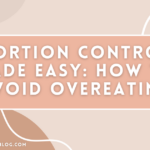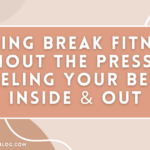Hiking is an exercise that is often forgotten about. It seems so simple to walk around that we take for granted that it’s a form of exercise. Hiking is a type of exercise that involves walking outdoors. It’s walking for longer distances usually in rough or hilly terrain outdoors. Hiking is different from walking because walking is often on flat ground for whatever period of time. Hiking is walking for several miles through footpaths and trails. Hiking can bring tons of benefits to your body and mental clarity walking outside. Read more to learn about how hiking can be a game changer in your fitness journey.
Physical Benefits of Hiking
Hiking can aid in weight loss. Hiking can be quite rigorous depending on what trail you are on, but overall it’s just walking. You will hit hills that are difficult to walk and have patches that are flatter and easy to walk. The kind of exercise that increases your heart rate quickly helps you to lose more calories. To lose weight you need to be taking in less calories than you’re exerting. Many people use cardio such as running and HIIT for a quick weight loss tactic, but these workouts can be hard on the body. Hiking can burn a good amount of calories without needing to do a strenuous high intensity cardio workout. The constant hiking up and down hills will raise and lower your heart rate to bring in the cardiovascular benefits.
Hiking can boost your cardiovascular system. When hiking your heart rate rises even if you’re going on an easy hike. If there’s a giant incline or just a bit of incline, your heart rate will rise and improve your aerobic health and endurance. If you hike regularly, trails will become easier, your endurance will grow, and you’ll feel less out of breath or fatigued. When you improve your cardiovascular health you can improve your blood pressure, cholesterol, and blood sugar levels. If you’re concerned about your heart health or are just interested in increasing your endurance, hiking can be a great form of exercise for you!
Hiking can engage your muscles for a toned physique. Hiking uses almost every major muscle group in the body. Walking uphill engages your calves, quads, glutes, hamstrings, ankles, hips, and core. If you are looking to engage your arms when hiking you can carry a weighted backpack or use trekking poles. Hiking has the ability to transform your muscles to be stronger, more defined, and stable.
Hiking can improve your balance greatly. It involves walking along rough terrain that might challenge your body’s balance. You might pass a stream or a pile of rocks that you have to pass over. This requires balance and overtime walking different trails increases your sense of balance. You will learn to trust your body more and move more agile. Hiking also increases proprioception which is your mind’s ability to be aware of your body’s positioning relating to its surroundings. When hiking you are aware of almost every rock, root, or stump because you don’t want to trip. This can transfer over to regular life with practice and allow your body to move cohesively and efficiently.
Mental Benefits of Hiking
Hiking has physical benefits, but it also has a ton of mental benefits too! When hiking you are usually within nature walking on a trail or a footpath. Nature has been found to have a profound benefit on your mental and emotional wellbeing. It can help to significantly reduce stress. It could be related to the impressive visuals that can be found in nature such as sunsets or sunrises. This can help bring people back to the present instead of constantly worrying about the future or the past. Seeing a flower or tree growing can make you realize that you’re part of something so much bigger than yourself which can be really impactful. Hiking can bring peace into your somewhat chaotic life and give you a glimpse of sanity when you feel like things are falling through the cracks. Hiking is a unique exercise that doesn’t require a gym, just yourself and the beautiful outdoors.
Hiking Necessities
I know I just mentioned that all you need is yourself and the beautiful outdoors, but sometimes equipment helps a ton. Hiking can be as simple as tossing on some shoes and going on a trail or packing up a ton of gear and hiking up Mount Everest. If you’re interested in jumping into hiking, make sure to think about these necessities before you do.
Step 1: Find a Trail
Before you go hiking you have to choose the trail first. You might think that you have to drive out to another state to find these beautiful trails, but usually you don’t. Every state has tons of hiking trails that you can try out. If you’re a beginner, look up trails that are beginner friendly and mostly flat. If you’re more experienced, find trails that challenge your abilities. It depends on what level of difficulty you’re looking for, but here are some sites that can help find trails near you!
All Trails: https://bit.ly/3AvecK7
Trail Link: https://bit.ly/3afh2Zm
Hiking Project: https://bit.ly/3ynEz1Y
Step 2: Find the Best Bag for You
If you’re going for a short hike you may not need a fully packed bag, but you never know what you’ll need so try to be prepared. You can find any kind of bag online or in stores for hiking. My favorite bag for quick hiking trips is a drawstring knapsack. Something small and light will be easy for short hikes.
If you’re going on a longer, more rigorous hike then you will need a more advanced hiking bag. A lot of people go camping halfway through the hike so that will require a lot of luggage to be brought. Think about what trail you’re hiking and how much luggage you will need to bring, then choose what kind of bag will work best for you.
Step 3: Fill Up Your Pack
Once you find the pack that’s best for you, it’s time to fill it up! The first thing to bring is always water. Most people don’t realize the immense importance of water, especially when hiking or exercising. Get a water bottle that keeps your water cold and refreshing. The best kind of hiking water bottle will have a long tube straw so you don’t have to stop to take out your water bottle.
Depending on how long and challenging the trail is you might need to bring snacks or a whole meal with you. If you’re planning on bringing snacks, bring something nourishing that won’t melt or go bad in your bag.
My favorite thing to do on hikes is to bring a sandwich, a few granola bars, and an apple or orange. This can be a great meal to stop and enjoy in the middle of your hike.
You never know what will happen on a hike, so always be prepared with a first aid kit. It doesn’t have to be a large kit and take up space, but bringing some small necessities if you scrap up your arms or legs can be great to have. Hikes are unpredictable and you don’t want to be ill prepared if you or a friend gets injured.
I would always suggest bringing an extra shirt or rain jacket. Weather can change so quickly and you don’t want to be caught in the pouring rain with no change of shirt. Look into athletic apparel that will dry quickly and can be thrown in your pack easily.
The last thing that I always say to pack is sunscreen. No matter how long of a hike you’re going on please bring sunscreen. Your skin is very sensitive and it will burn quickly when you’re out in the sun without you noticing. You might be under shade during your hike, but the UV rays can still get through. Find the SPF that is right for you and others hiking with you and pack it up!
Step 4: Wear Appropriate Clothing
Hiking is very different from other forms of exercise because it’s outdoors. I would not suggest wearing what you normally wear to the gym on hikes. It’s usually pretty hot and sweaty on hikes, but wearing just a bra and shorts can cause irritation if you’re brushing against any bushes or trees. Covering up as much skin as you can is actually beneficial on hikes. Wearing shirts and longer shorts that have great aeration is key. Wearing a longer layer of clothing can also keep bugs from landing on you. Bugs are attracted to sweat and if they can reach your bare skin they will annoy you the whole hike.
I recently went hiking in Montana and made the mistake of wearing the wrong hiking shoes. We had an elevation gain of 3,275 feet, so we were hiking up some really steep hills to get to the top of this mountain. Don’t make the same mistake I did and invest in either hiking boots or hiking tennis shoes.
Step 5: Get to Hiking!
These are all the basics of hiking, but if you think I missed something or have questions, comment below or email me! Hiking is meant to be a fun workout to get outdoors. Go enjoy the weather and get your workout done all in one!








